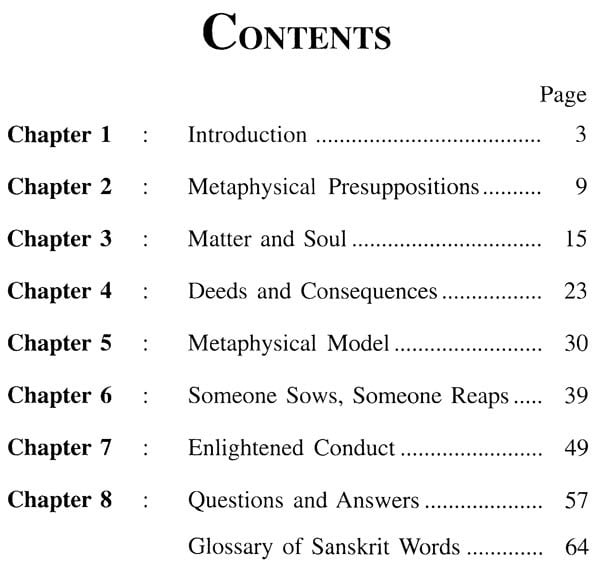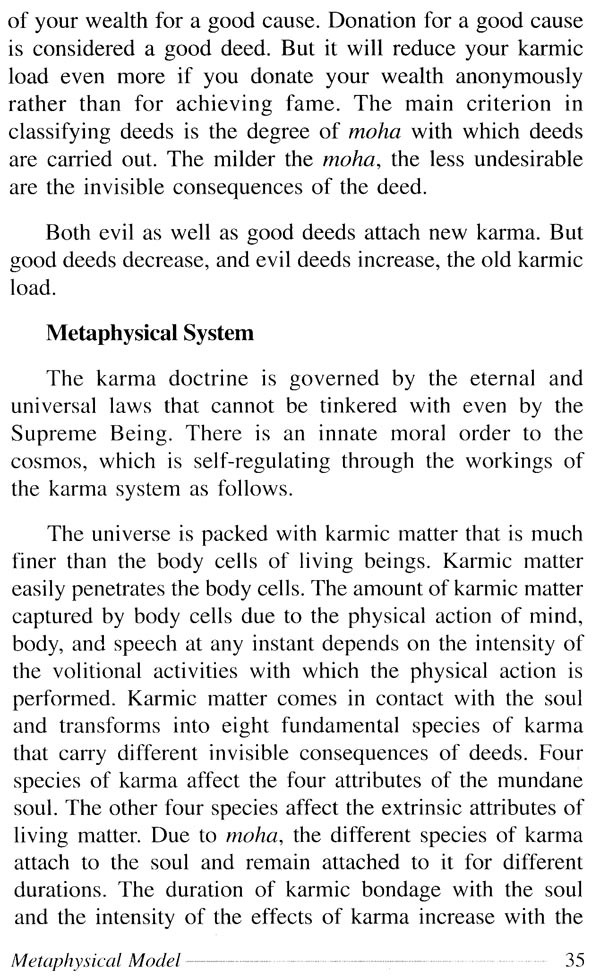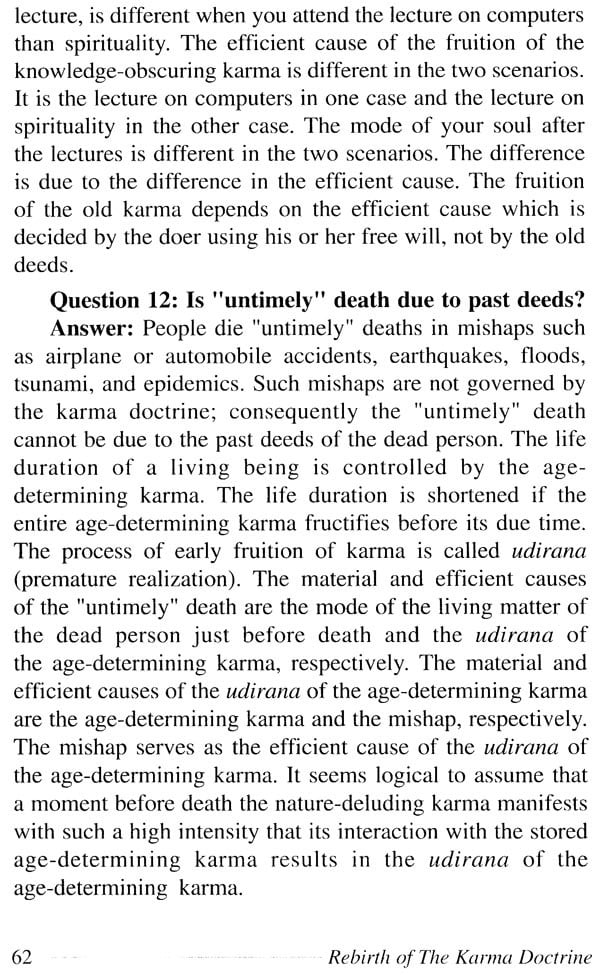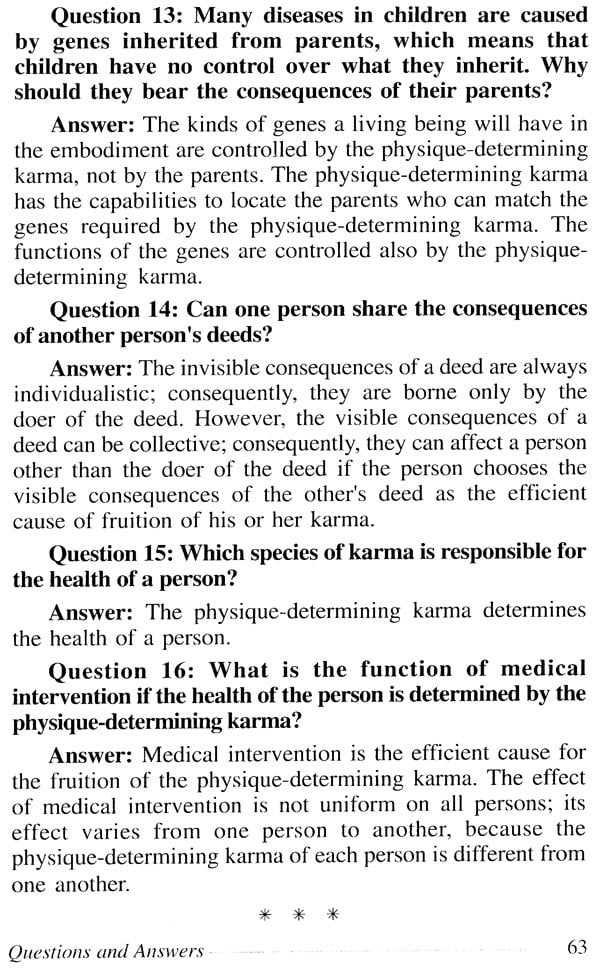
Rebirth of The Karma Doctrine
Book Specification
| Item Code: | UAB695 |
| Author: | Subhash Jain |
| Publisher: | Hindi Granth Karyalaya |
| Language: | English |
| Edition: | 2010 |
| ISBN: | 9788188769445 |
| Pages: | 64 |
| Cover: | PAPERBACK |
| Other Details | 7.50 X 5.00 inches |
| Weight | 70 gm |
Book Description
Not all consequences of deeds are controlled by the karma doctrine which is based on the laws of nature. This book explains exactly which consequences are governed by the karma doctrine. Two types of consequences are identified: visible consequences and invisible consequences, which are respectively controlled by man-made laws and natural laws. A conceptual and metaphysical model of the karma doctrine is developed using a distinctive approach that resolves the contradictions in the existing notion about karma. The author makes suggestions that can be helpful in daily conduct to reduce the karmic load and provides answers to some unresolved questions related to the karma doctrine.
Living beings are physically dissimilar from each other, and we make use of this fact to identify different living beings. It is not difficult to differentiate among plants, animals, and human beings because the forms of their bodies are different from each other. However, this fact cannot be used to make distinctions between identical twins or among clones. In spite of physical similarity between identical twins or among clones, there are functional dissimilarities between them, and we make use of this fact to differentiate between them. In other words, living beings are different from each other because they perform different functions or deeds.
This principle implies that the deeds of a person make him or her unique. Our deeds determine what we are. Put another way, living beings are the consequence of their deeds. It must therefore be the law of nature that every deed has consequences and the doer of the deed has to bear them.
Book's Contents and Sample Pages












